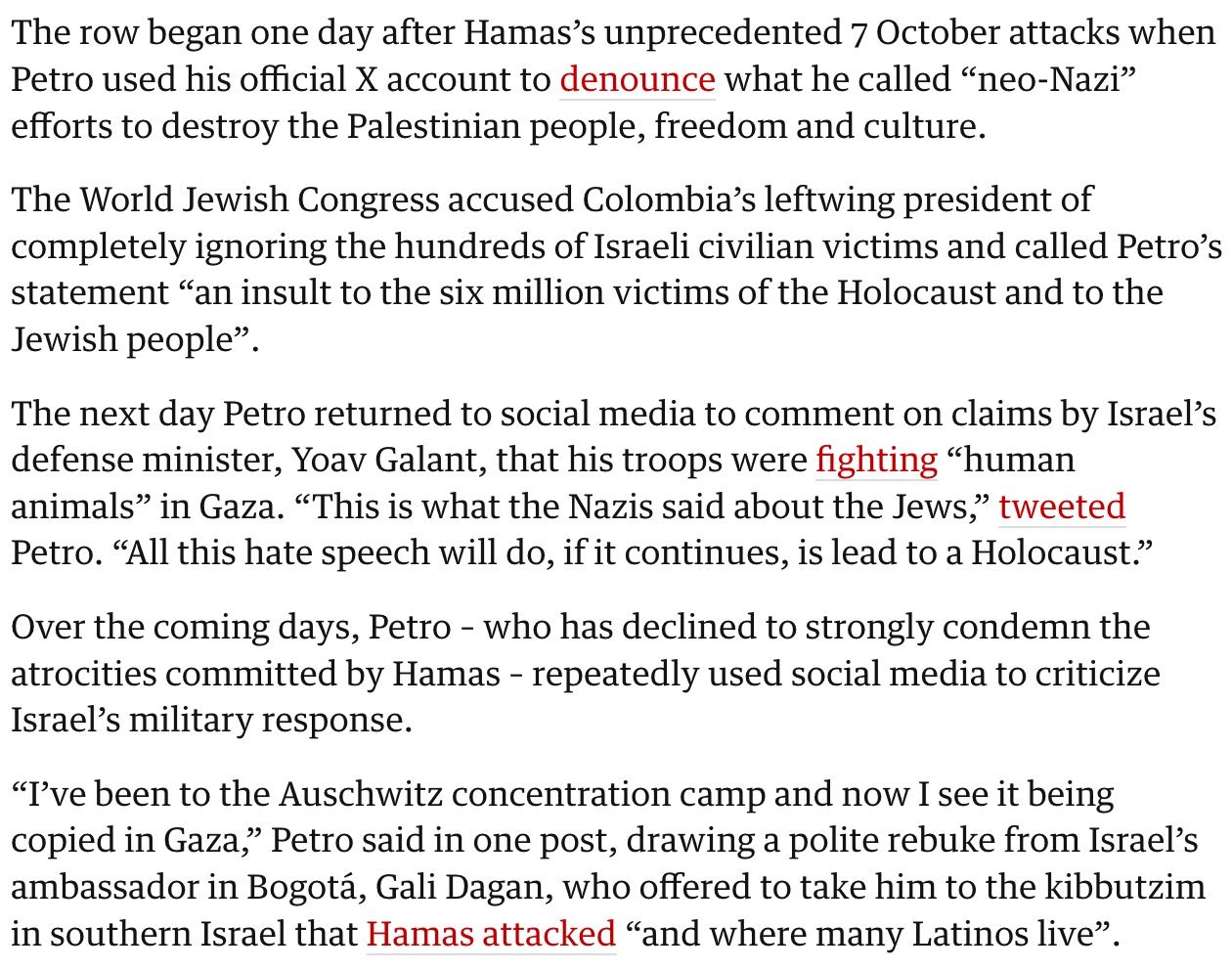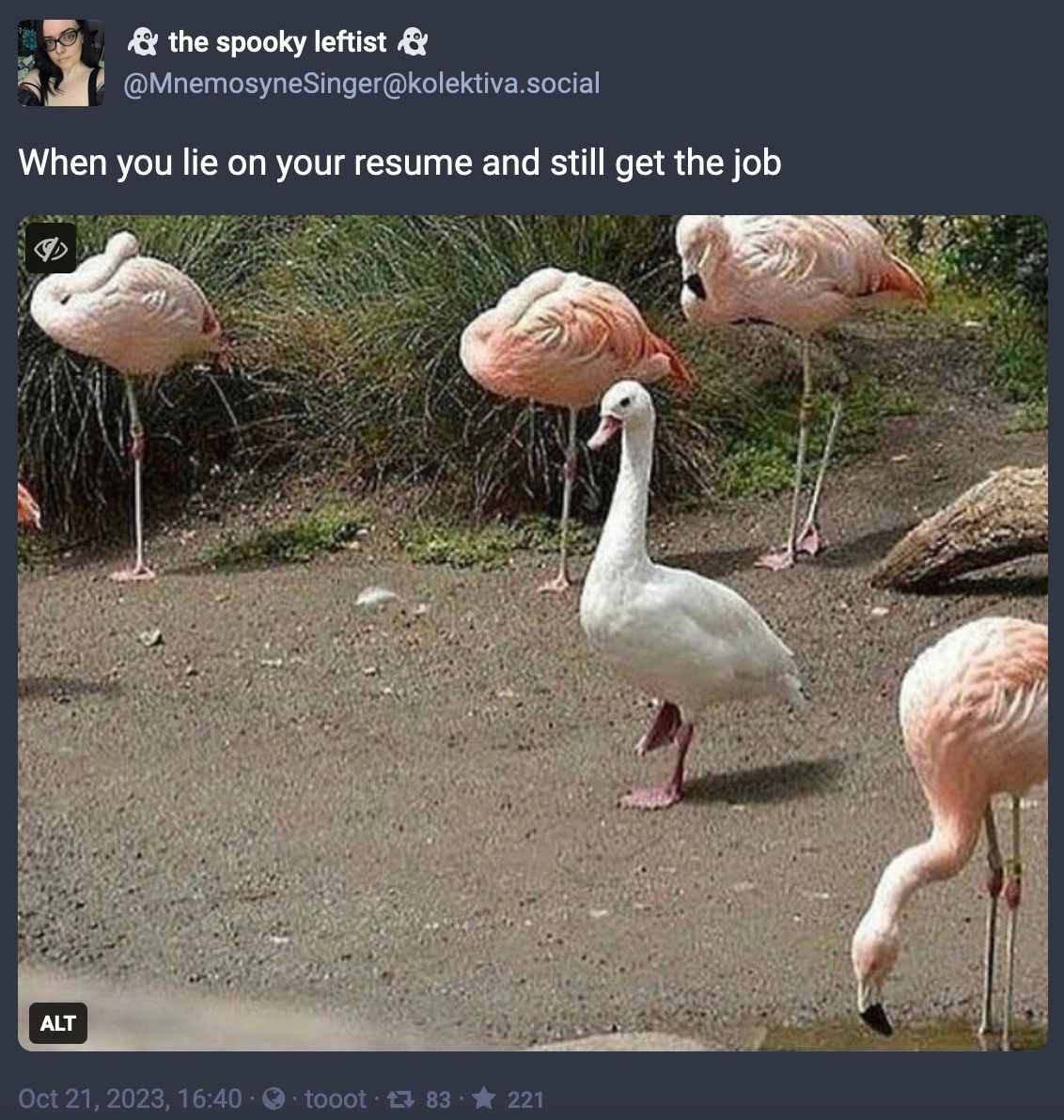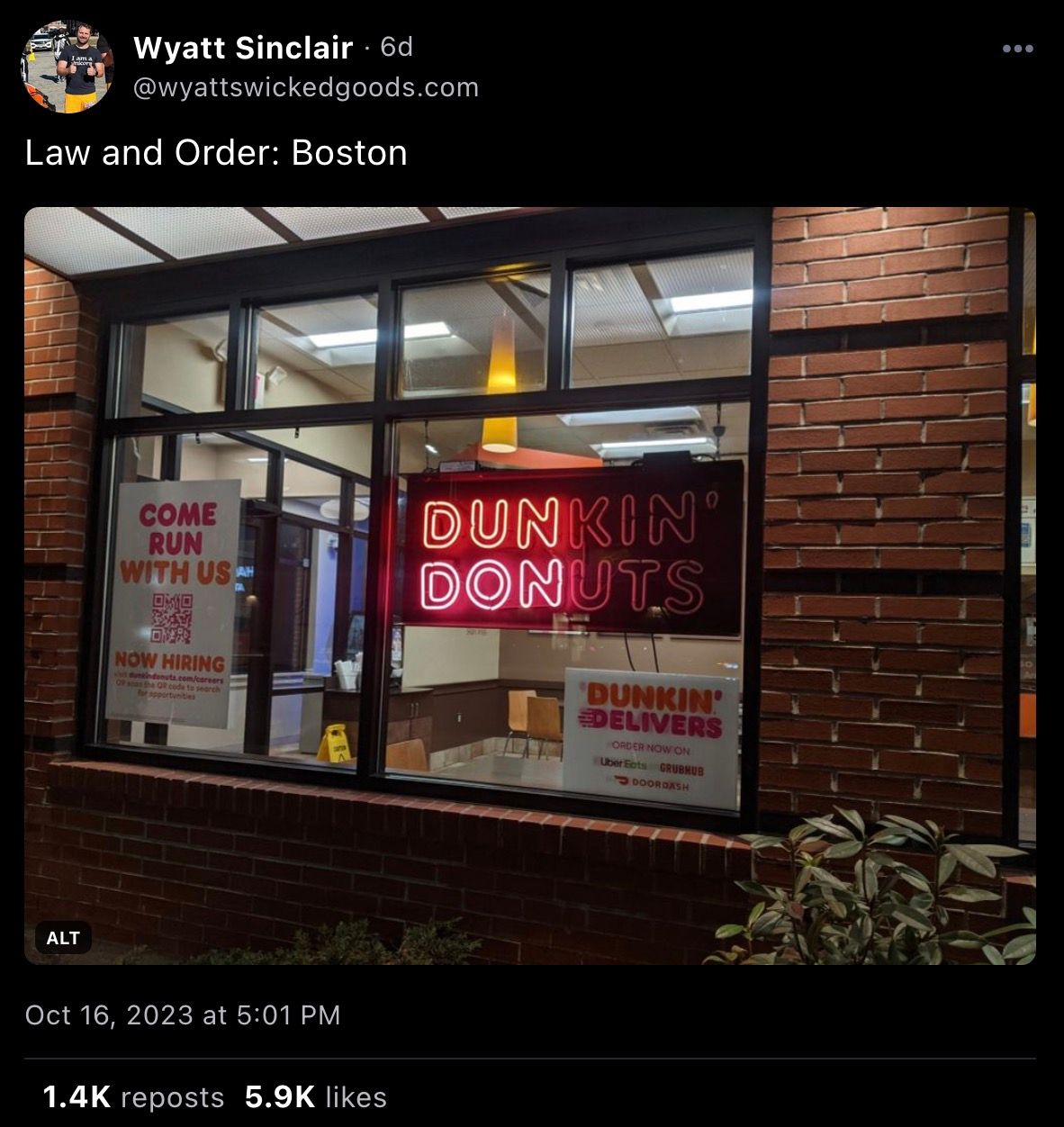Updates from Adam Isacson (October 22, 2023)
Hi, this is Adam. If you're receiving this message, it means you signed up on my website to receive regular updates. If you'd like to stop getting these, just follow the instructions further down.
This week's e-mail is shorter. I'm somewhere in Colombia right now, and will be here, visiting a few regions, over the next two weeks. I'll post photos and reflections on what we're learning in my next messages, but there's not much to say yet—I just got here.
This is a research trip with a complicated agenda, and putting it together kept me from doing much writing or super-close monitoring of events over the past week. As a result, this update is pretty light: a first-cut overview of some migration numbers that the U.S. government just released, an Instagram interview, some shorter posts. But no border update or "upcoming events" posts—those won't return until the second weekend of November.
Venezuela Was the Number-One Nationality of Migrants at the U.S.-Mexico Border in September
For the first month since August 2019, Mexico is not the number-one nationality of migrants encountered at the U.S.-Mexico border. Venezuela, for the first time, was number one.

Just-released data show that Border Patrol apprehended 54,833 citizens of Venezuela in the areas between the U.S.-Mexico border’s ports of entry in September, a record for countries other than Mexico, and far more than its apprehensions of 39,773 Mexican citizens in September.

At the ports of entry (official border crossings), Customs and Border Protection (CBP) encountered 11,751 more Venezuelan citizens, most of them asylum seekers who had made appointments using the CBP One smartphone app. (In September, of 50,972 people who made it onto U.S. soil at ports of entry, CBP reports that about 43,000—84 percent—had CBP One appointments.) Mexico, with 13,523 citizens encountered, was still the number-one nationality at the ports of entry.

Add together the ports of entry and the areas between them, and Venezuela was the number-one nationality in September with 66,584 migrant encounters. Mexico was the number-two nationality, with 53,296. No other nationality came close; Guatemala was in third place with 34,537.
September marked the end of the U.S. government’s 2023 fiscal year. For decades, CBP has reported its migrant encounters by fiscal year, so we now have a “year-end” comparison, at least for Border Patrol apprehensions between the ports of entry. Using this metric—which may include some double-counting, with the same migrant being apprehended two or more times—we find that 2023 was the number-two year ever for Border Patrol migrant encounters at the U.S.-Mexico border. Only 2022 was higher.

Only 28 percent of migrants apprehended at the Mexico border in fiscal 2023 were citizens of Mexico. Since 2000, 67 percent of migrants apprehended at the border have been Mexican citizens.
(Note: at GitHub, I’ve updated the tool I use to make these and many other migration charts, with data going back to October 2019. I use it all the time, feel free to run a version of your own. It does require you to know how to run a free web server on your computer; I don’t make it public because generating a table with 48 months and 20 countries makes a web server work very hard.)
Instagram Live with Beto O’Rourke
Thanks to Texas's Beto O'Rourke for inviting me to talk about migration and the border on his much-viewed Instagram account. The half-hour video is here.

A Political Stunt Falls Flat at the Border
In July, the Republican governor of Virginia, a swing state far from the U.S.-Mexico border, sent a contingent of 100 state National Guard troops to Texas to support Gov. Greg Abbott’s (R) border-security clampdown known as “Operation Lone Star.” The troops went, Youngkin said, to combat the “fentanyl crisis.”
Anybody who looks at data could have told Youngkin that 89 percent of fentanyl along the border gets seized at the official border crossings, not in the wide-open areas between the crossings, where his guardsmen were on duty. We also could have told Youngkin that the overwhelming majority of fentanyl is crossing in California and Arizona, not Texas.
But the Governor sent the troops, and off they went to Eagle Pass, at a cost of $2 million over 3 weeks.
And unsurprisingly, over the course of their deployment, they encountered exactly zero shipments of fentanyl.
That’s a finding of the news team at the local Washington, DC NBC TV affiliate. Reporters filed an open-records request with the state of Virginia and obtained daily “situation reports” and other documents from the deployment.
The guardsmen did see 6,717 people they described as “illegal immigrants” and referred 1,834 to the federal Border Patrol. This isn’t surprising, as several hundred migrants per day have been crossing in Eagle Pass, seeking to turn themselves in to apply for asylum. You can stand by the riverbank there and see migrants, too.
After several days, a “commander’s assessment” document noted “a weakening of the deterrent effect of our Soldiers and Airmen.” Migrants, seeking to turn themselves in anyway, were ignoring commands to turn back.
Troublingly, NBC reported that the internal reports showed “conflict over Virginia’s policy to withhold water to migrants.” Texas has ordered Operation Lone Star guardsmen not only to block and turn back asylum seekers already on U.S. soil, which violates federal law and the Refugee Convention. It also has ordered them to refuse water and other assistance to migrants on the riverbank, held back by Texas’s concertina wire and troops, even in 100-degree heat, even when those migrants are families with children. The reports reveal some “conflict” over Virginia’s enforcement of this inhumane policy.
The tactical impact of Virginia’s National Guard deployment was zero. The impact on morale and readiness was likely negative. But Governor Youngkin got to travel to downtown Eagle Pass for a photo op (his office provides a page of media-ready high-res photos), so there’s that.
We Should Reflect and Discuss Events in a Way That Will Not Increase the Despair and the Anger in People.

I was saddened by Colombian President Gustavo Petro’s decision to respond to a man-made calamity, on the brink of a calamitous reprisal, by taking to Twitter and using inflammatory language that does nothing to bring peace closer.
The world needs to hear wisdom right now, especially from the leader of a country that’s struggling to heal the wounds of its own generations of man-made calamity. The Colombian people need to hear wisdom.
That’s all. Except for this Thich Nhat Hanh quote.
If one terrorist group is violently destroyed, another will emerge; it’s endless. So I told the editors, “When you report on terrorist acts, use your compassion and deep understanding. Explain the story in such a way that the reader doesn’t become enraged and perhaps become another terrorist.”
We can tell the truth, but we must help people understand. When people understand, their anger will lessen. They don’t lose hope, they know what to do and what not to do, what to consume and what not to consume in order not to continue this kind of suffering. So my message that morning was that we should reflect and discuss events in a way that will not increase the despair and the anger in people. Instead, we can help them to understand why things happen, so their insight and compassion increase. We can make a big difference with the practice of looking deeply. The solution isn’t to hide the truth.
And Finally



